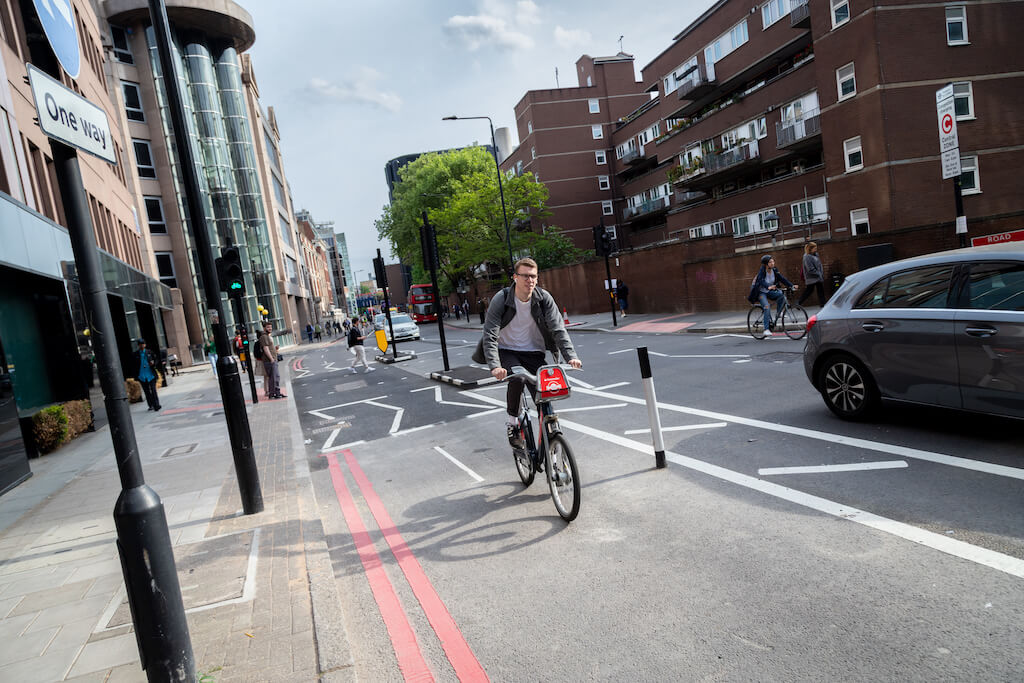A recent study titled “Impacts of active travel interventions on travel behavior and health” has helped shine a very positive light on the effects of the so-called Mini-Holland program in London, England. The study includes six years of research and presents compelling evidence of the program’s success in promoting active travel, particularly cycling, and reaping significant health and economic benefits for the community.
Originally conceptualized in 2013 during Boris Johnson’s tenure as Mayor of London, the Mini-Holland concept aimed to transform selected boroughs into cycling-friendly environments by allocating £100 million for active travel interventions, inspired by the Netherlands’ cycling infrastructure success.
The research paper is authored by Rachel Aldred of the University of Westminster, School of Architecture and Cities along with Anna Goodman and James Woodcock.
Increased Active Travel in Mini-Holland Areas
The study reveals an overall surge in active travel, encompassing both walking and cycling, in areas where active travel interventions have been implemented. This shift towards healthier modes of transportation signifies a positive change in travel behavior, aligning with the program’s objective of enhancing active travel infrastructure.
Dose-Response Relationship
Notably, the study distinguishes between low-dose and high-dose population samples, shedding light on the varying impacts of the interventions. While there was no discernible change in habits among the low-dose population, those residing in high-dose areas experienced a remarkable increase in participation and total volume of active travel. This effect was even more pronounced for residents living in Low Traffic Neighborhoods (LTNs), emphasizing the significance of more aggressive measures.
Cycling Takes the Lead
In terms of cycling, the study observed a weaker increase in the absolute amount of travel time by bike compared to walking. However, cycling exhibited the strongest evidence of additional participation or new bike users, particularly in high-dose areas and LTNs. High-dose areas witnessed an average increase of 13 minutes per person in cycling, while LTNs saw an even more substantial jump to 21.5 minutes.

Santander Cycle customer (photo: TFL)
Reduced Car Ownership and Usage
The study provides “generally consistent” evidence of reduced car ownership and/or use, with high-dose LTN areas showing the most significant impact. This aligns with the program’s goal of promoting sustainable modes of transportation and reducing dependence on cars.
Economic Impact: A Billion-Pound Success
The economic impact of the Mini-Holland program is nothing short of remarkable. The study estimates a 20-year health economic benefit of more than £1 billion, primarily driven by reduced mortality linked to increased physical activity. LTN areas, despite their relatively small footprint, accounted for 40% of the overall health economic benefit, highlighting their pivotal role in the success of the project.
LTNs: A Cost-Effective Investment
The study specifies that LTNs, despite their varying implementation costs (£25-28 for low-cost emergency schemes and £112 for higher-spec schemes), deliver substantial benefits. LTNs, on average, cost £4,800 per adult in health economic benefits due to increased physical activity, making them a cost-effective investment in promoting healthier lifestyles.
How it was done
This study delves into six years’ worth of data from the People and Places longitudinal study, focusing on the travel behavior effects stemming from substantial investments in active travel infrastructure within three Outer London boroughs, known as the ‘mini-Hollands programme.’
Findings and Future Implications
The study supports the success of the Mini-Holland program, providing a compelling case for increased funding for active travel infrastructure.
While the increase in cycling may not be revolutionary, the study emphasizes that bold interventions deliver the strongest results, particularly in areas where aggressive measures are implemented. The economic viability of such programs, backed by tangible financial benefits, should encourage all to consider long-term strategic planning and replicate successful initiatives in other regions.
One of the most compelling highlights is the determination that these Low Traffic Neighbourhoods may offer a stunningly high value for money from 50:1 up to a whopping 200:1.
“Active travel interventions provided high value for money when comparing health economic benefits from physical activity to costs of scheme implementation, particularly low traffic neighbourhoods,” the report reads.
The cycling revolution unveiled in Outer London showcases the tangible benefits of prioritizing sustainable and active modes of transportation, paving the way for healthier, greener, and more economically vibrant communities.
Leave a comment